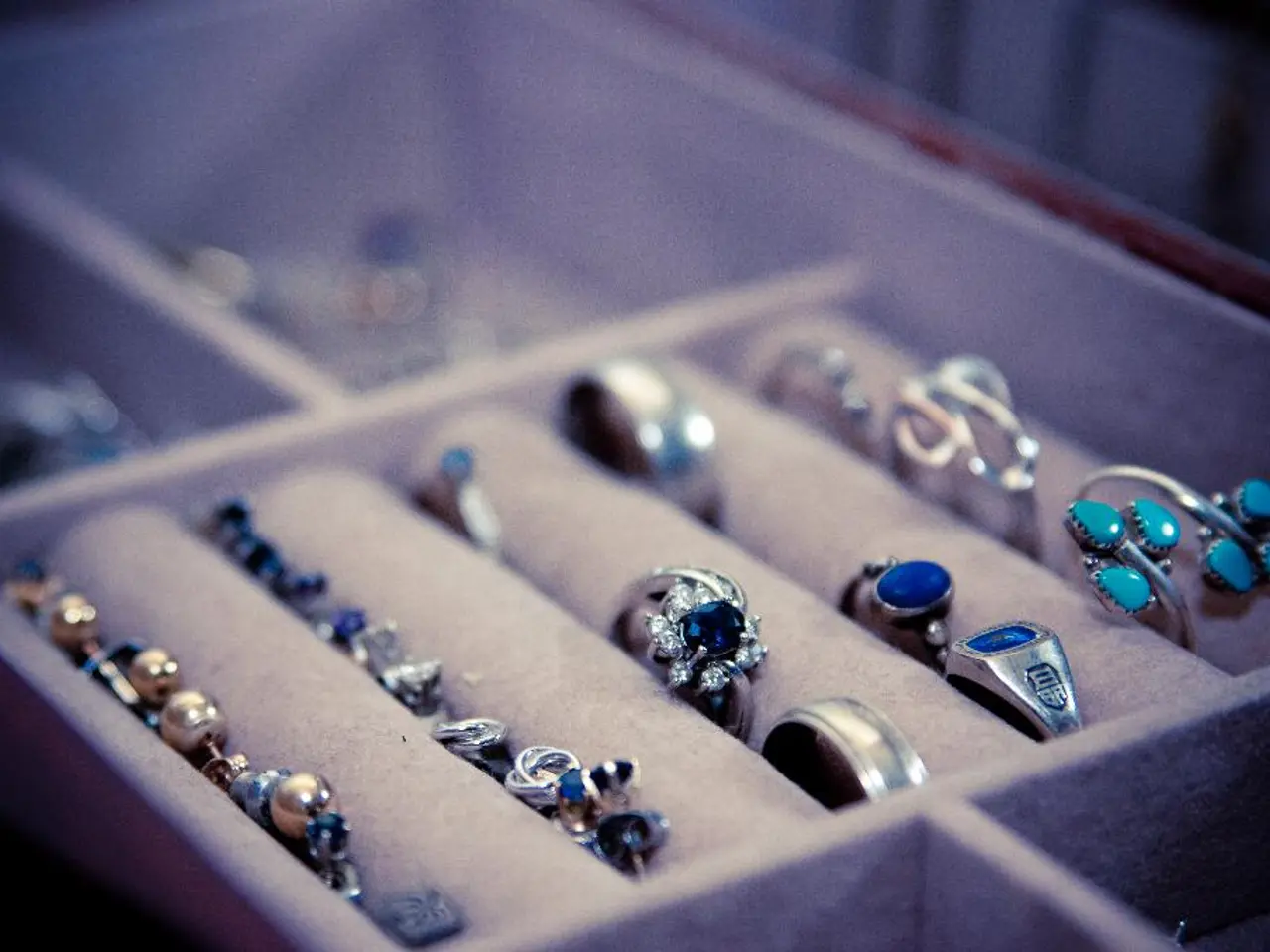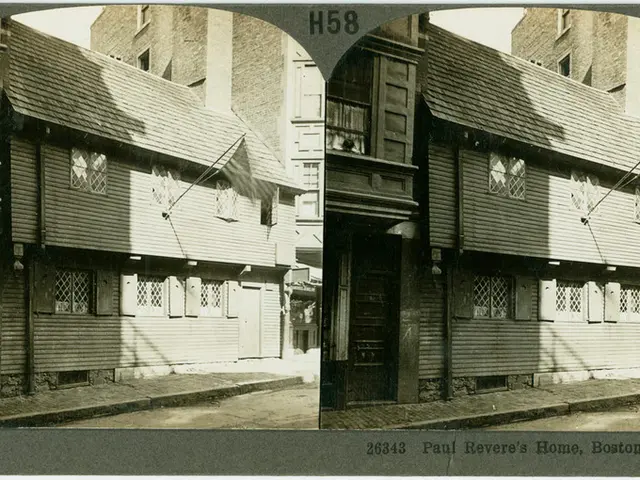Delve into the Past: An In-depth Look at Garnet's Role in Ancient Jewelry
In the realm of decorative jewelry, few gemstones have held as enduring a place as garnet. From the Roman era to the 19th century, garnet has graced the fingers, necks, and wrists of many, captivating audiences with its rich red color, symbolic meanings, and versatility in artistic techniques.
During the Roman era, garnets were prized for their vibrant red color, symbolizing life and protection. They were often used in signet rings and intaglios, adding a touch of elegance and mystery to personal adornments and talismans.
As we move into the Migration Period and Early Medieval Europe, garnets found a place in cloisonné jewelry—a technique involving small compartments of gold filled with garnets or glass-paste enamel. This style, popularized by the Byzantine Empire, was adopted by "barbarian" peoples, symbolizing both luxury and Christian faith. The striking contrast of deep red garnets set in gold was visually impactful and symbolically significant.
The Victorian era saw a resurgence of garnet's popularity, especially among the middle class who could access colored gemstones more readily due to expanding trade and improved craftsmanship. Garnets were included in sentimental jewelry, such as floral motif engagement rings, often paired with other colored stones to spell out affectionate messages.
By the Belle Époque (circa 1895-1914), the emphasis in jewelry shifted to lacy, delicate floral and ribbon motifs, reflecting neoclassical and rococo influences. Although diamonds and platinum dominated, garnets were still valued for their rich color in combination with intricate designs that could include transformable pieces like necklaces-to-tiaras.
The 'Grand Period' of jewellery manufacture saw the creation of bold and distinctive bracelets, brooches, and necklaces using garnet. A particular favourite was the bright green variety of andradite garnet, known as demantoid, which started to be set commercially in jewellery and accessories in the 1880s. The naturalistic green tones and adamantine lustre of demantoid led to a surge in popularity for novelty brooches designed as frogs, lizards, and dragonflies.
E W Streeter supplied demantoid to London jewellers for their creations in the 1880s, and notable jewellers such as Peter Carl Fabergé and those in Czechoslovakia joined in, using demantoid in their jewellery creations. In Czechoslovakia, jewellers began to set clusters of small faceted pyropes in base metal, providing affordable jewellery for the mass market.
Garnet continued to be used in cheap central European jewellery at the end of the 19th century, often accompanied by turquoise, pale green beryl, and pearls. Large pyrope cabochons were commonly set in champlevé-enamelled frames during this period.
Thus, garnet's popularity stemmed from its aesthetic appeal, symbolic meanings, and adaptability across different jewelry-making techniques, from engraved Roman rings to Byzantine cloisonné and Victorian sentimentality, to Belle Époque elegance with floral inspiration and transformable formats.
In the pursuit of lifelong learning, one may enroll in courses about gemmology to gain a deeper understanding of garnet and other gemstones. These publications could include diploma-level study materials, providing comprehensive information on the various types of garnet, their origins, and their significance in fashion-and-beauty throughout history.
Following the trend established by the elite jewelers of the 19th century, modern designers might find inspiration in garnet while creating home-and-garden decor items, such as vases or ornate frames, that capture the rich red tones and symbolic meanings of this gemstone.
A keen collector might strive to amass an extensive library of publications on gemmology, displayed prominently in a Study or Reading Room, showcasing their passion for this captivating subject matter.
Bearing in mind the enduring popularity of garnet in jewelry history, contemporary fashion lovers might consider incorporating garnet accessories, such as earrings or statement necklaces, into their wardrobe, blending glamour with a touch of timeless elegance from the past.




